by Christie Purifoy | Jun 22, 2013 | children, God's Love, grief, healing, motherhood, One Word, Pregnancy, river, Stories, Uncategorized
When I turned 29, I ate coconut cupcakes.
They were baked by my mother, in my kitchen, with my daughter. They were brought to my maternity ward hospital room by my pastor and his wife. That day I ate coconut cupcakes and introduced you to my dearest friends.
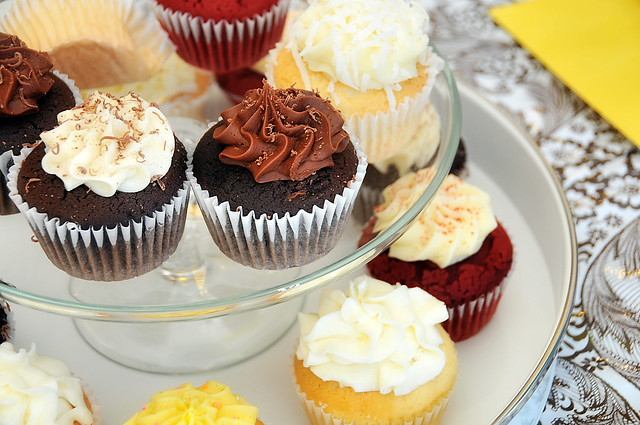
Tomorrow, June 23, you and I will celebrate.
I made those same coconut cupcakes this week. I shared them with neighbors and sneaked more than a few myself after your bedtime, but, tomorrow, we won’t eat coconut cupcakes. We will share a dairy-free, wheat-free, nut-free birthday cake with Lego-shaped candles.
In the hospital, the day you were born, the nurse looked at the date on my admission bracelet and said, “Here is a son who will never forget his mother’s birthday.”
Tomorrow, I will probably remind you two or three times that it is also my birthday. But you are seven, and I do not mind all that much. Because you are the best birthday gift I have ever been given.
There is a story behind those words. A story to which I return every year on this day.
It is a story first of all about longing. I wanted a baby. I wanted a sibling for our daughter, but my body refused to cooperate. I had thought after our first experience, after the diagnosis and the referral to a good specialist, that the second time would be easy. We understood the problem, we would not wait to pursue the solution.
It was not easy.
It was so much harder. Because the drugs in which I had placed my faith did not work, it was also more hopeless.
Today, I am grateful for every month (months turning over into years) that I waited for you. Because of those months, the words of Job became my own: “My ears had heard of you but now my eyes have seen you.” Now when I imagine, like all the parents in this world, every horrible thing that might happen, I am not afraid. I know that God can meet us in the pain and there is nothing else like that encounter.
But our hearts are not so easily untangled from fear. After the miracle of your conception, fears I didn’t even know I had twisted my thoughts. I felt as if I owed so much to God, and I became convinced there would be some price to pay. I became convinced there was something wrong with you.
Until that day. That day, six months along, when a stranger placed her hand on my shoulder and prayed for me. That day a river was unleashed and when I came up for air the fear was gone. I heard God’s own voice whisper: “This boy is a gift. A good and perfect gift. There is no price to pay.”
You’d think I would have known. Your due date was close enough to my own birthday. Why didn’t I guess?
Somehow, I never dreamed I would meet you for the first time on my birthday. God’s stories are so much better than the ones we imagine for ourselves.
Yes, you were born on my birthday. You were a good and perfect gift, given the day I turned 29.
Since that day, I have had reason to be afraid. So have you. I have given you food with my own hand and seen the fear in your eyes as your throat begins to swell. I have called 911 on your behalf too many times to count. I have seen how tiny you seem lying there on an emergency-room bed.
And yet I have never questioned those whispered words.
There is nothing wrong with you. Not really. You are, indeed, perfectly made. The worst thing can happen, but the Love who made you will take care of you. I pray always that you will be healed, but I know my prayers have been answered before I ever prayed them.
We have journeyed from coconut cupcakes to blue marshmallow cakes to gluten-free bakery cakes with Lego-shaped candles, and now I know these three things:
God is good.
There is no need to be afraid.
And this: our lives are stories, and these stories are written by Love.
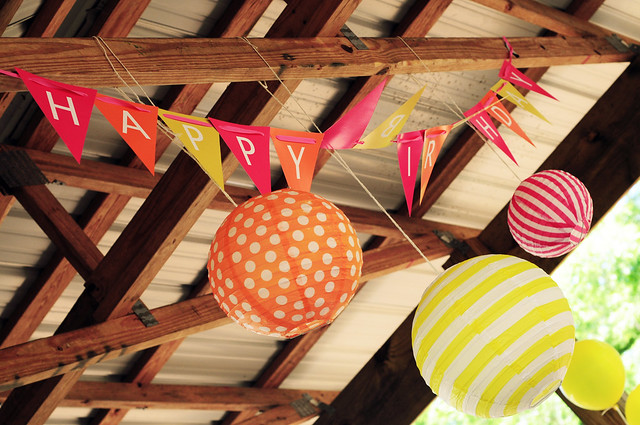
by Christie Purifoy | May 29, 2013 | children, Community, God, grief, Home, Uncategorized
If you are a parent or teacher or camp counselor, you know the forms I’m talking about.
One for each child. Name, birthdate, address. Mother’s cellphone and father’s cellphone. Mother’s email and father’s email.
It’s the final question that gives me trouble: EMERGENCY CONTACT PERSON. If the parents cannot be reached, who should we call?
For more than three years, I have left that line blank. On school forms and dance studio forms. On swim team forms and class field trip forms.
Empty. Blank. Missing.
There is no one to call.

We’ve never lived near family. Grandparents are once-or-twice-a-year treats. My children trade Christmas gifts with cousins they have yet to meet.
When we left Chicago, we said goodbye to more than our third-floor-lake-views-if-you-squint apartment. We said goodbye to neighbors who would knock on our door if our two-year-old escaped during the party and wandered down the stairs toward the front door and the busy street just beyond it. We said goodbye to the family in the basement apartment who could always take in our kids if an emergency came up. We said goodbye to all the friends on the blocks around us – friends whose children we had sheltered while their mothers and fathers welcomed new siblings at the downtown hospital, or, more terribly, said hospital goodbyes to siblings they would never bring home.
We left behind every one of our Emergency Contacts. Since then, I’ve learned you do not easily or quickly replace such things.
When our fourth baby arrived two weeks before grandma’s scheduled visit, we called our realtor. She was the only one who’d met our children or seen the inside of our home.
Yesterday, I filled out four more forms. The final blank lines felt a little blanker, a little emptier. They asked, not for an emergency contact, but for sponsors. These were baptismal forms. Later this summer, we’ll turn our church into a mini waterpark when we baptize four children all at once.
Even if I keep expectations low (this is a sponsor, after all, not necessarily a godparent or guardian), I wish someone could be there. A witness to our lives. Someone to stand in the crack. Someone who will always be there to remember with the firstborn. To tell the story to the fourth. Someone to make us all feel like nothing is missing.
Except, something is always missing. Something is always cracked and broken.
For a long time, I convinced myself that the most broken things and places were out there. Poverty and gun violence. Orphan crises and war. And, for the most part, this is true. There is a terrible darkness in this world, but it doesn’t live in my house. And if I have one goal in life, it’s to make sure that my home is a shelter for anyone looking for relief from the world’s dark places. We all need a place to rest before we head back out again, lights in hand.
However, I’m discovering that aloneness and disconnection are cracks that run just about everywhere. Through every heart. Every relationship. Every home and neighborhood and community. Even my own.
In our house, two sons share a room. With the volume turned low, it is storybook perfect. In real life, it is loud and late and lego-filled. But as much as I sometimes dream of sticking them in separate rooms so I can get a little peace and quiet at the end of the day, God-help-me, this sharing is a good thing. It is a good thing because they are never really alone.
And yet.
The older brother will fall asleep. Then, the little brother lies there, still awake, and it doesn’t matter that his brother’s head is two feet from his own. It doesn’t matter that his parents are right downstairs.
He feels alone, abandoned by a brother who would choose sleep over one more lego creation, and he weeps.
He cries himself to sleep.
The truth is we can be alone in a crowd. We can be alone even when our brother is within reach of our tiny four-year-old arm.
Some people might tell you it’s God or Jesus who fills in those cracks. They might say we’re chasing the wrong things when we look to fill our empty places, our blank lines with other people.
But I think they may be wrong.
The story of Adam and Eve and Eden might not tell us much about the science behind the world’s creation. I do think it tells us everything about these cracks and missing pieces. It tells me that in the beginning of our story we lost something precious. We lost the closeness (so close you might call it oneness) we once enjoyed with other people. We lost the closeness we once had with our Maker.
This story we’re living is all about recovering that precious thing.
I don’t know how to make the blanks and cracks and disconnections disappear. I do know that if we lean in to them – really pay attention to them – we might glimpse the end of our story. The beautiful end. Which will be, of course, a new beginning.
“With all wisdom and understanding, God made known to us the mystery of his will according to his good pleasure, which he purposed in Christ, to be put into effect when the times reach their fulfillment – to bring unity to all things in heaven and on earth under Christ.”
(Ephesians 1:8-10)
Amen. Come, Lord Jesus.
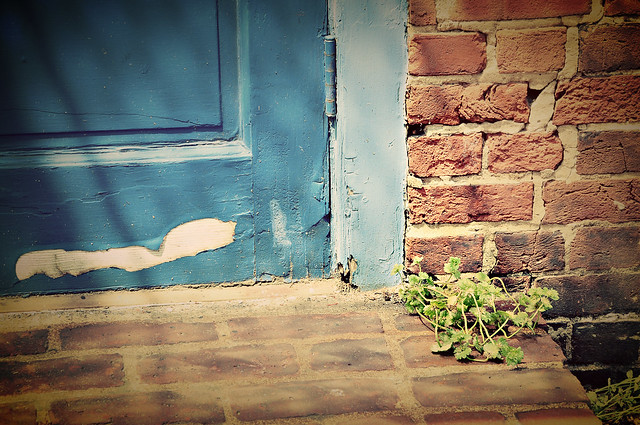
by Christie Purifoy | May 25, 2013 | Books, children, Seasons, Summer, Uncategorized
Here is one last peak at my bookshelves before summer.
I think one of these might be just the thing for that afternoon in the hammock, the long car trip, those sweaty hours between events at the swim meet.
I plan to read as much as possible these next few months. I’m imagining quiet afternoons with a sleeping baby and three kids with noses-in-books, but the reality is more likely to be me on my green sofa, one eye on the so-close-to-crawling baby and one on my book, while I try desperately to tune out the shrieks of three children running circles around the room. Yes, I’m trying to be realistic.
Either way, my plan is to bring These Farmhouse Bookshelves back in September with fresh recommendations.

One of my favorite writers (she is a master of the revelatory interior monologue) has a new book. Kate Atkinson’s Life After Life: A Novel is the best thing I’ve read in a long time.
is the best thing I’ve read in a long time.
I was skeptical at first. Perhaps you remember my distaste for literary gimmicks? Atkinson’s latest is structured around a stunning gimmick, but this excellent novel doesn’t deserve that pejorative term.
The book’s heroine is Ursula Todd, an Englishwoman who lives (and dies) through the Great War, the Spanish Flu epidemic, World War II and the London Blitz, and all of the upheaval of early twentieth-century European history. She lives, and she dies, and then she is born again, always and, it seems, forever on the same snowy night in 1910.
That is the novel’s literary device, and though it seems to break so many rules (most importantly, the reader’s assumption that the very worst thing cannot befall a novel’s primary character), Atkinson uses it to brilliant effect.
Ursula’s many lives and deaths, and the fascinating ways in which her story changes or does not, add up to a compulsively readable novel (after moving slowly through the first third, I couldn’t put it down) and one that gives us so much to think about: from questions of history and personal fate to the God-like role of novelists themselves.
Life After Life is the coming-of-age novel writ large. Ursula is given chance after chance to live well. We are given only one. We can learn a great deal from a character who knows the depths of the adage that “practice makes perfect.” The important question is, in that tumultuous time and now, what constitutes a well-lived life? What does “perfect” really look like?
Sylvie’s knowledge … was random yet far-ranging, ‘The sign that one has acquired one’s learning from reading novels rather than an education …’
A Time to Keep: The Tasha Tudor Book of Holidays may be the best children’s book I never read as a child. I love it so much, I feel as if I have lived in its pages the way only a young child can.
may be the best children’s book I never read as a child. I love it so much, I feel as if I have lived in its pages the way only a young child can.
Featuring Tudor’s beloved illustrations, this picture book shows us twelve months of celebration in a rural, New England family about a hundred years ago. Based on Tudor’s childhood memories, we have beautiful pictures and brief descriptions of a bonfire on New Year’s Eve, a syrup-making party in March, a dance around the Maypole, and a very special August birthday, to name just a few.
This is a book about the special rhythms of the seasons and of family life. It is sweetly nostalgic and inspiring. Enthralled by the book’s August birthday party, my daughter and I have decided that someday, somehow, we will float a candlelit birthday cake down a stream at twilight.
August brought your mother’s birthday which we celebrated at night by the river. The table was set with birch bark plates and gourd drinking cups.
I pulled this last book off my shelf last night and promised myself I’d reread it over the summer. Even the summer months deserve something of high literary value, but I find that short stories are easier to squeeze in between visits to the pool, park, and farmer’s market.
The Springs of Affection: Stories of Dublin is a collection of realist short stories by one of The New Yorker’s most gifted writers, Maeve Brennan. Out of print for decades, these stories were republished four years after Brennan’s death in 1993.
is a collection of realist short stories by one of The New Yorker’s most gifted writers, Maeve Brennan. Out of print for decades, these stories were republished four years after Brennan’s death in 1993.
Born in Ireland, Brennan lived in New York from the age of 17, but the stories are each set in Dublin. These are stories about family and affection as well as the uglier emotions which can mar those relationships: emotions like grief, envy and even hatred.
These are stories in which each detail of a character’s dress and environment matters. They suggest that a writer’s primary task is observation. Writers, especially, appreciate Brennan’s work, but I think she has something to teach all of us. Whether we write or not, our lives are enriched when we pay close attention. To the arrangement of dishes on our kitchen shelf. To the face of a friend or child.
… you would think, looking at such an arrangement, that the boxes contained something of interest or of value. And what did they contain? Old bills marked paid thirty years before. Recipes for dinner she had never cooked, dinners so elaborate that she must have been dreaming of a vist from the king and queen of England when she cut the menus out of the magazines in which she had found them.
What do you plan to read this summer?
by Christie Purifoy | May 11, 2013 | Books, children, Uncategorized
The very best writers are also readers.
No wonder there are so many good books about books (and bookstores and libraries). Here are three: a novel for grownups, a picture book for the littles, and a read-aloud for both.

I finished the new novel Mr. Penumbra’s 24-Hour Bookstore: A Novel by Robin Sloan just last week, and I could hardly wait to tell you about it.
by Robin Sloan just last week, and I could hardly wait to tell you about it.
In some ways this pick is an obvious one for me: a cozy, creepy bookstore and a bookish mystery wrapped up in a sweet story of friendship and community.
In other ways, my appreciation for this book doesn’t make much sense at all: a fanatical Google employee, geeky computer-talk, and characters who are adorably cartoonish rather than fully human.
But I loved it. This is why: optimism and joy.
This is a novel to make us love the old ways and the new (dusty books and the latest e-readers). This is a story to fill us with admiration for quirky, independent bookstores and the corporate giants who rule the internet.
Sloan reminds us that printed books were once the very latest in technological innovation. Remembering that helps me to feel so much more at ease in a world that often seems to be leaving books behind.
… this is exactly the kind of store that makes you want to buy a book about a teenage wizard. This is the kind of store that makes you want to be a teenage wizard.
This next pick is the kind of old-fashioned picture book I love. Library Lion by Michelle Knudsen and Kevin Hawkes is lovely to see and lovely to hear. This is one you won’t mind reading again and again (which is really the only kind of picture book worth having at all). It makes me long for the familiar shelves of my own childhood library.
by Michelle Knudsen and Kevin Hawkes is lovely to see and lovely to hear. This is one you won’t mind reading again and again (which is really the only kind of picture book worth having at all). It makes me long for the familiar shelves of my own childhood library.
I’m afraid that in our zeal to see our children develop into readers we move them too quickly from picture books to easy chapter books. The very best picture books are works of art. They are as important for adults and older children as they are for the preschool set.
Not only that, but the ideas and the language of most picture books (remember those “soporific” lettuces in the Beatrix Potter tale?) are far more challenging than anything you’ll find in a beginning reader.
Spend a few dollars and support a great artist. Buy a picture book.
One day, a lion came to the library.
I’m sure you’ve all read this last title. Matilda by Roald Dahl is a classic. I wasn’t going to mention it at all, but this hardcover edition is so pretty, and … well … what if some of you haven’t read it?? I can’t be held responsible for that, now can I?
by Roald Dahl is a classic. I wasn’t going to mention it at all, but this hardcover edition is so pretty, and … well … what if some of you haven’t read it?? I can’t be held responsible for that, now can I?
Matilda just might be my favorite little reader. Her parents are horrible, her home life is tragically comedic, but Matilda finds the strength and love she requires in books. Good books turn Matilda into a heroine, and the book which bears her name is very, very good.
‘I’m wondering what to read next.’ Matilda said. ‘I’ve finished all the children’s books.’
by Christie Purifoy | May 4, 2013 | Books, children, Family, motherhood, Uncategorized
Another Saturday, another peak at my bookshelves. This one is for the mothers.
I know what you’re thinking. Who has time for reading once they have children? Admittedly, this is how I feel about exercise, but I do know a few moms who make the time. Me, I make time for reading. Every Single Day.
The secret? Lower Your Standards.
It is not possible to keep a pristine kitchen floor and read a novel a week. Priorities, people. It’s about priorities.
With that in mind, here are a few books for Mom.

I gave this one to my own mother a few years ago: Apples for Jam: A Colorful Cookbook (No) by Tessa Kiros.
by Tessa Kiros.
This is a cookbook by a mom for moms (or anyone who cooks for a family). It doesn’t try to tempt children with smiley faces on pancakes. It doesn’t try to trick children by sneaking spinach purees into the brownies. This is a simple but beautiful book full of comforting, delicious, family-friendly food with a European flare.
This cookbook is all about memories. Creating them. Cherishing them. This is a cookbook that knows family happens around the table.
Apples for Jam is a satisfyingly hefty hardcover book full of beautiful photographs and the author’s own family memories.
Something else: the recipes in this cookbook are organized by color. Pink. Brown. White. And so on. It is wildly impractical and utterly enchanting. Kiros understands that many of us go looking for a recipe, not because we need an “entree” or an “appetizer,” but because we want to feed someone. We want to take care of ourselves and others. Maybe that requires an entree. But maybe that requires something white and beautiful. Or something rich and brown.
My Greek friends remember coming home from school to a piece of white bread, lightly broiled and splashed with olive oil, then sprinkled with some beautiful oregano, crushed between their mamma’s fingers.
This year I sent my mother-in-law Everything That Makes You Mom: A Bouquet of Memories by Laura Lynn Brown. Laura is a friend, but I’ve been excited about her book ever since she shared the concept with me.
by Laura Lynn Brown. Laura is a friend, but I’ve been excited about her book ever since she shared the concept with me.
This is a gift book, but I hesitate to call it that. Aren’t most “gift books” horrible? Do they ever get pulled from their place on the bookshelf? I’m willing to bet not often.
Everything That Makes You Mom is different. Full of great (read: not sentimental) quotations about motherhood and structured around the author’s own memories of her mother, this beautiful little book asks questions and offers prompts to help us record the big and little things we remember about our Moms.
Complete with your written memories, this would make a great gift for your mother. If your mother is no longer living, this book would make a wonderful keepsake for the next generation.
Mom bought a gravy whisk that we saw in a specialty kitchen store not so much because she needed a gravy whisk, but because its packaging claimed, ‘It scoffs at lumps.’ She gave it a new name: lump scoffer. When she made gravy, she whisked with glee, scoffing at those lumps herself with a single ‘Ha!’
Finally, here is the only parenting book I ever recommend: Parenting Is Your Highest Calling: And Eight Other Myths That Trap Us in Worry and Guilt by Leslie Leyland Fields.
by Leslie Leyland Fields.
I could tell you all about this one, but, really, isn’t the title enough? This book will set you free: free to live, to love, to be a whole person as well as a Mom or Dad.
If you or someone you know is feeling overwhelmed by parenthood itself or overwhelmed by all of the guilt-inducing advice send them this book. Trust me. When I first read this book I whispered thank you, thank you, thank you with every page I turned.
We want so badly to get it all right – our marriages, our parenting, our family dynamics. We want to meet all the requirements of a good Christian family. But God takes every hour of our home life, as well as every hour outside of it, and he uses the mistakes, the flaws, the pain as much, if not more, than he uses the good.
by Christie Purifoy | Apr 27, 2013 | Books, children, Family, motherhood, Uncategorized
Today, he turns four. My beautiful boy.
These are the books we read together. These are the books that will one day bring me to tears when I pack them up in boxes.
This Saturday’s book recommendations are all Beau-approved. And he is one discerning little guy.
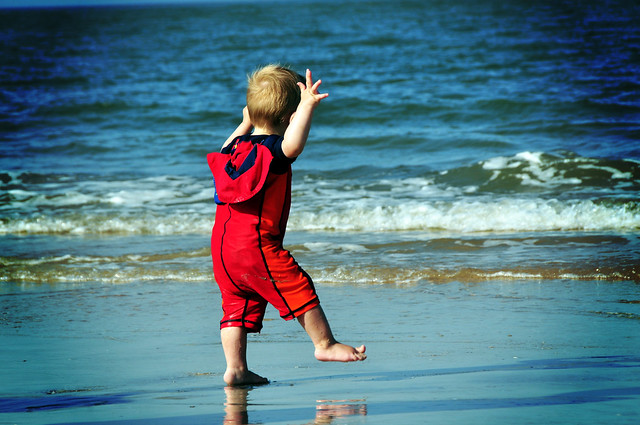
I can no longer remember if I bought this book with Beau in mind. I think I did. All children love balloons, but Beau’s adoration is of long standing and un-paralleled intensity. Emily’s Balloon by Komako Sakai is beautiful. A book for little people and their grownups.
by Komako Sakai is beautiful. A book for little people and their grownups.
The story is simple but profound. The illustrations will melt your heart.
Best of all, this sweet little story of a girl and her balloon was one of the few books Beau was willing to sit through at age two that he still enjoys today.
This one’s a keeper.
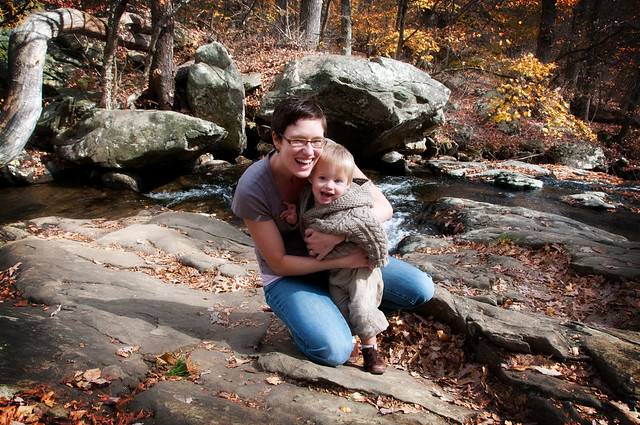
Helen Oxenbury is one of my favorite children’s book illustrators. King Jack and the Dragon by Peter Bently, and illustrated by Oxenbury, was definitely purchased with Beau in mind.
by Peter Bently, and illustrated by Oxenbury, was definitely purchased with Beau in mind.
Here is another one for littles and their parents. We appreciate the story of a child’s imaginative play (complete with giants who turn out to be mom and dad coming to bring Jack in for bed), and they get inspired to build their own backyard, dragon-proof, tent fortresses.
This is an old-fashioned book that doesn’t feel even the slightest bit old.
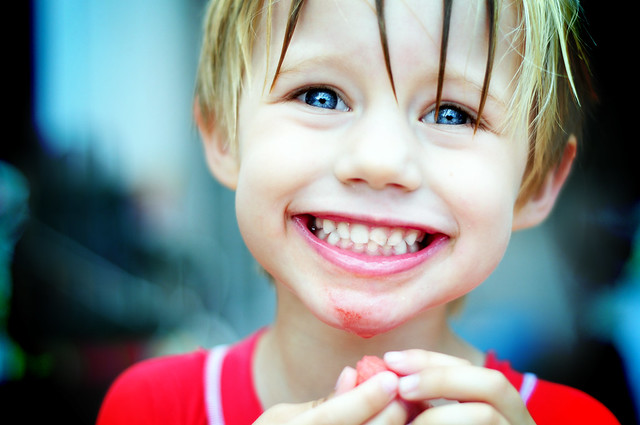
Alphabet books are funny things. They tend to feel baby-ish, and we often acquire them when our children are too little for alphabet lessons. The inscription in my copy of Gyo Fujikawa’s A to Z Picture Book reminds me that I bought this one for Beau’s first Christmas (he was eight months old).
reminds me that I bought this one for Beau’s first Christmas (he was eight months old).
Most books purchased too early begin to fade into the wallpaper of our lives. Understandably, we forget to pull them out when they might be age-appropriate. Thankfully, I remembered this one in time.
Beau (unlike his older brother at this age) has a strong fascination with the alphabet. I’m not sure if it’s an interest unique to him or if he’s been inspired by his two older book-reading siblings, but this book is exactly what he needs right now. It’s the kind of book he can actually “read,” and that means a great deal to this always-trailing-two-steps-behind third born boy.
Alphabet books are a dime a dozen, aren’t they? This one, however, is a work of art. Fujikawa’s illustrations are equal parts adorable and intricate. There is a gorgeous mix of black-and-white ink drawings and softer pastel full-color spreads.
This is a book to linger over, searching each drawing, slowly turning pages.
This is a book for sharing, side-by-side, underneath a quilt on a rainy day.
And only the best books are snuggling books.
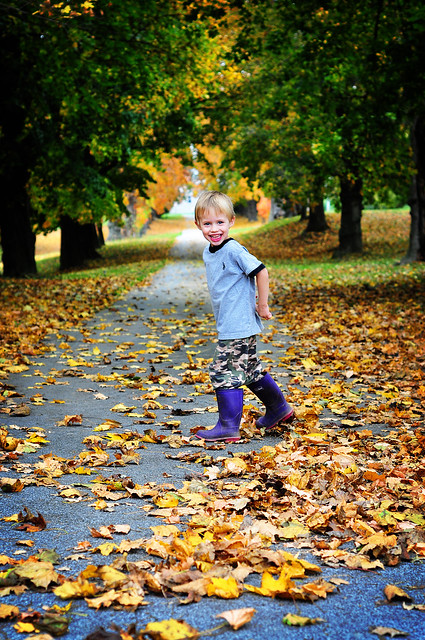
Happy birthday, Beau. I love you.
Mama.
p.s. I know you better than I did last year. You are one year closer to the Beau I glimpsed in that river of prayer.











